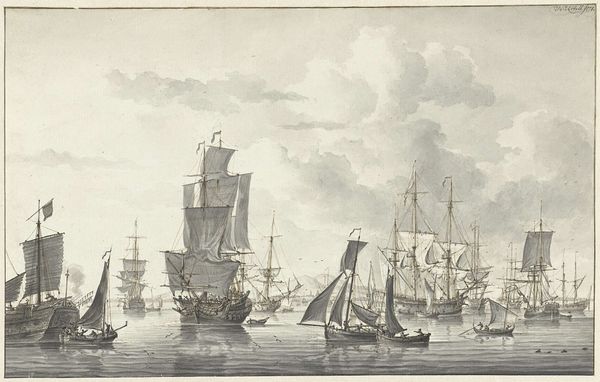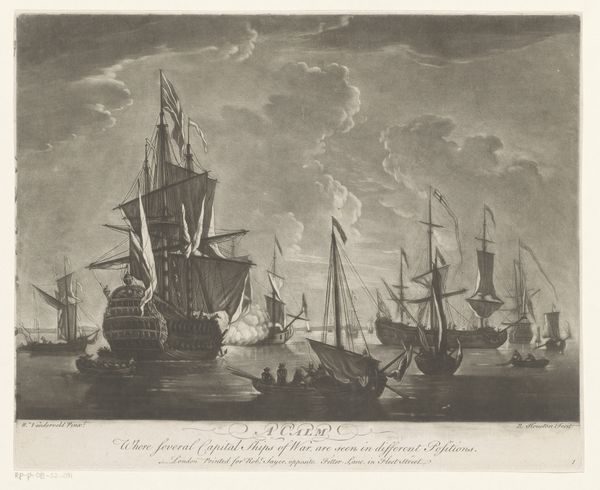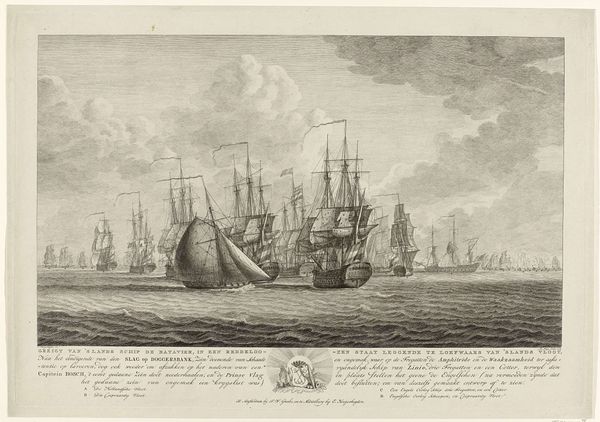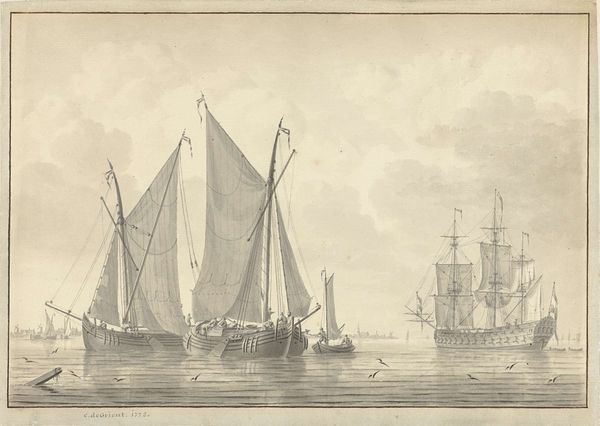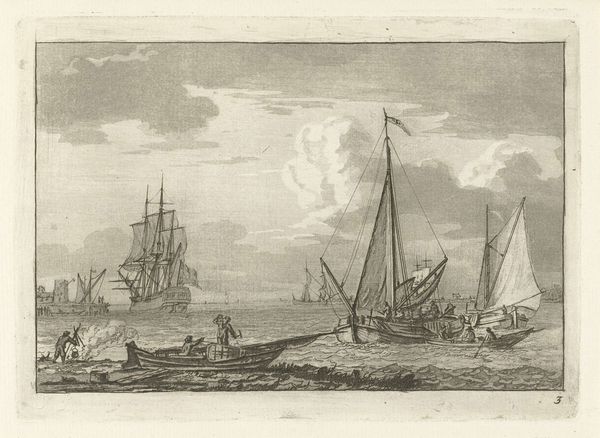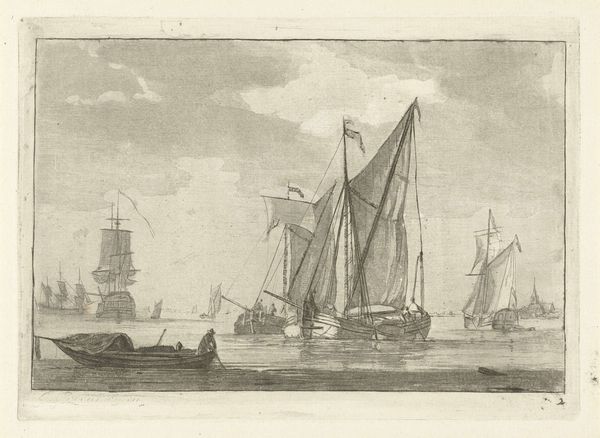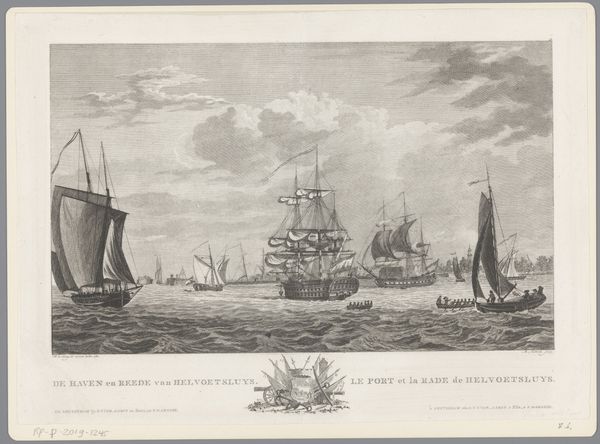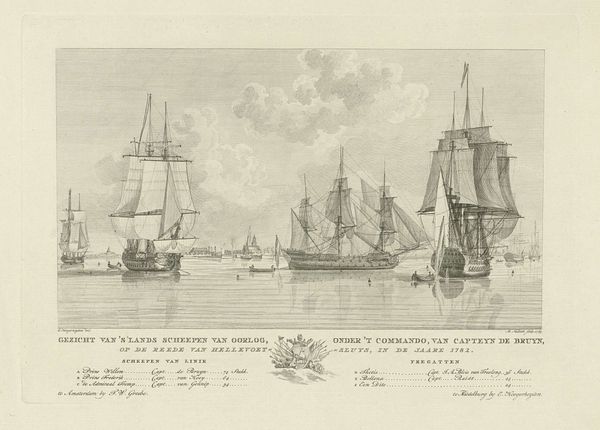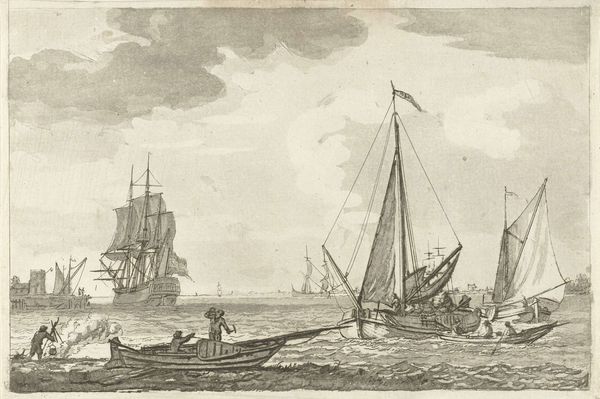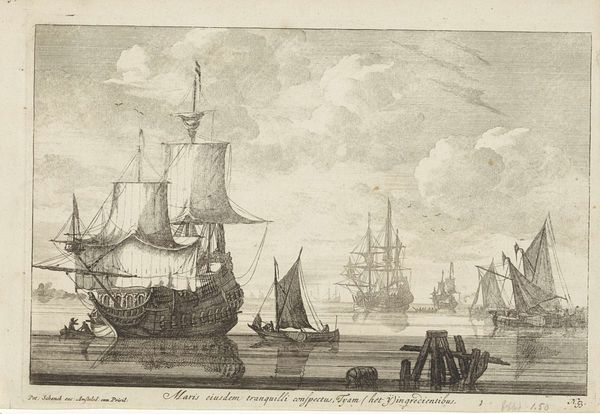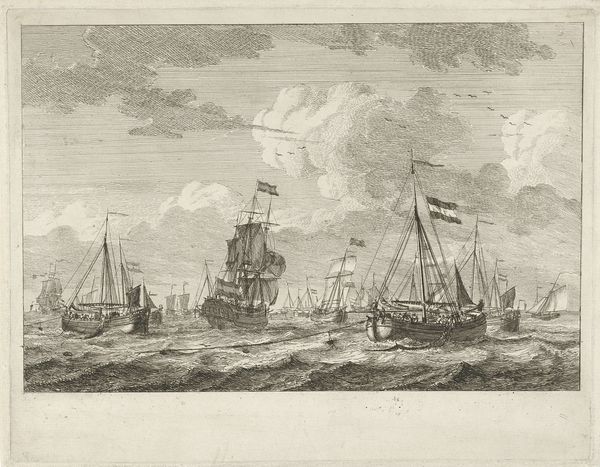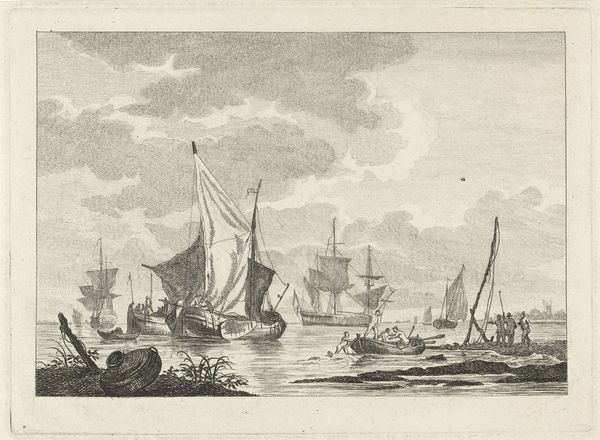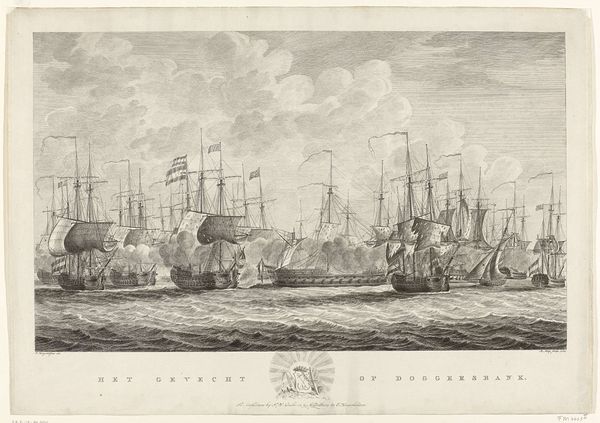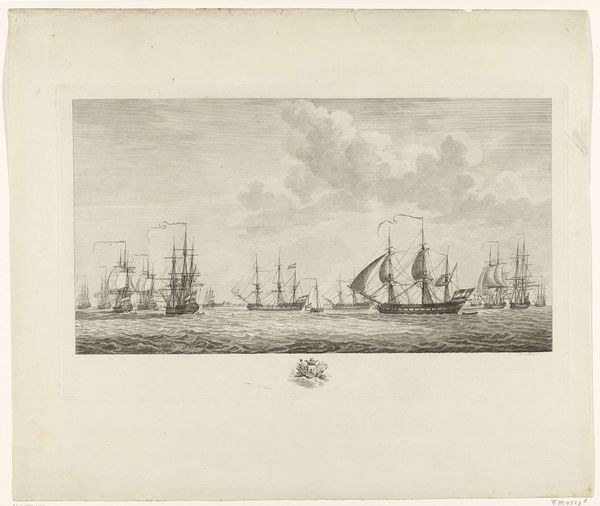
print, engraving
#
dutch-golden-age
# print
#
old engraving style
#
landscape
#
cityscape
#
history-painting
#
engraving
#
realism
Dimensions: height 313 mm, width 381 mm
Copyright: Rijks Museum: Open Domain
Curator: I’m drawn to the stillness conveyed in this print titled “Zeegezicht met zeilschepen,” or “Seascape with Sailing Ships” from 1783, made by Mathias de Sallieth. It's an engraving on paper. What strikes you first? Editor: That pervasive calmness, certainly. Despite the activity – ships sailing, what seems to be a cannon fired – there’s this profound sense of serenity. It reminds me a little bit of that Dutch Golden Age fascination with representing daily life, although here perhaps idealised through the lens of privilege. Curator: I agree. Engravings, especially seascapes, often served as documents but also symbolic landscapes. Ships, in particular, carried layered meanings: commerce, exploration, national identity, the sublime power of nature. The level of detail embedded into this piece is intriguing, particularly with the ships. Do you consider this an act of artistic storytelling? Editor: Indisputably. This harbors layers. Notice how those reflections create an uncanny doubling, a sense of mirroring the 'real' world with its representation. The almost photographic realism is striking for its time, especially regarding capturing a still life for maritime trade power in Europe. Curator: That interplay of reality and reflection, that connection back to an image of status. This speaks volumes about Dutch maritime culture at the time and about the symbolic power invested in seascapes. But what does it do in relationship to those who may not have had a connection to the Dutch "golden era?" Editor: Those historical blind spots, where narratives are constructed around national glory but often at the cost of eliding darker realities – colonial exploitation, trade routes paved by oppression... They become part of what we see, or perhaps what we need to seek beyond what is immediately presented. Curator: Exactly! That pushes us to grapple with visual languages, especially those inherited through cultural memory. A calm seascape becomes so much more than that--a loaded space for re-imagining colonial pasts. Editor: And I'm left wondering who was this "Monsieur Echerin" to whom the work is dedicated? Clearly a man of significance, embedded within this scene. Curator: An important consideration when navigating cultural echoes in art. Overall, engaging with this image leaves me thinking about the historical gaze, the visual framing, and how that, still, influences our perceptions today. Editor: Absolutely. It highlights the active role of viewers engaging critically with any visual legacy. Thank you.
Comments
No comments
Be the first to comment and join the conversation on the ultimate creative platform.
